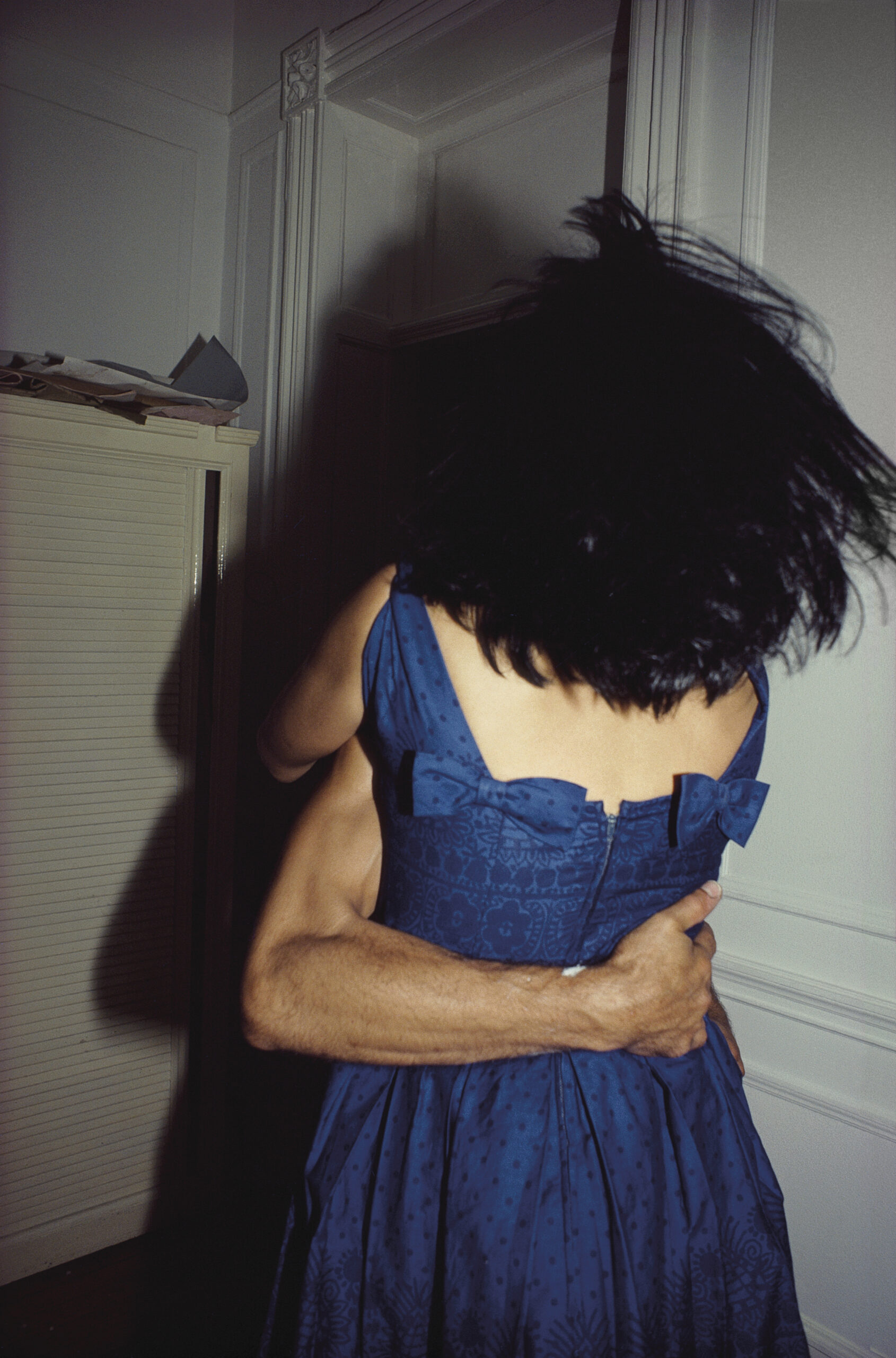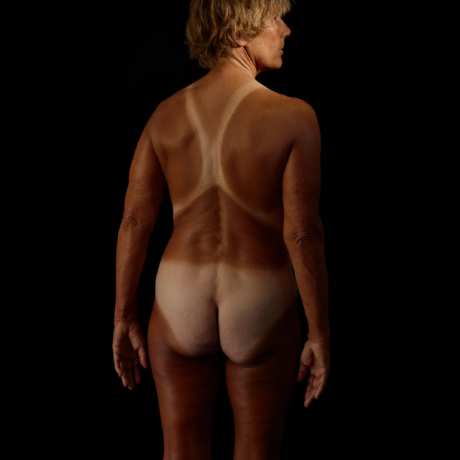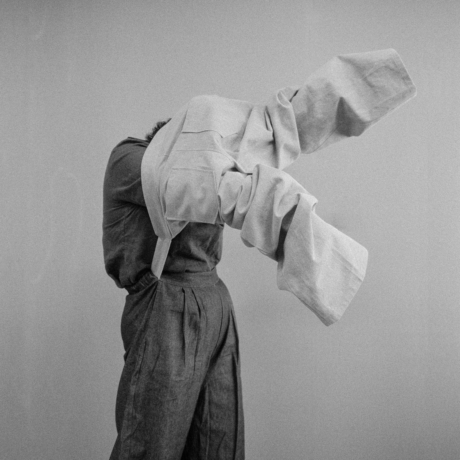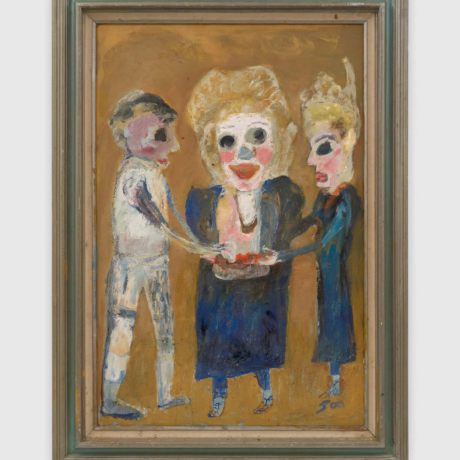
A hand in the crowd is raised, and amongst the questions being asked, a simple statement is made: ‘Often, when we begin looking into photography, there are a few photographers that we state are our favourites, which, over time, we realise aren’t so great as we first imagined. Nan Goldin is not one of those photographers.’
Nan Goldin has exhibited at the Stedelijk Museum in Amsterdam twice before, once in a slide show performance in the late 1980s and then in a solo exhibition in 1997. Now, she has returned for a third time to present a retrospective of her work, which she insinuates will probably be her last.
In a panel discussion for the opening of This Will Not End Well, Nan explained that the exhibition title is an ironic statement about mortality, which she believes is a joke that she’s not sure everyone quite gets.
“Unless you embrace death, this will not end well.” Moreover, it is a comment on our times and a warning that if we continue on our course politically, ecologically, and technologically, to name but a few factors, this inevitably will not end well.
The retrospective at the Stedelijk Museum in Amsterdam is the first to present a comprehensive overview of Nan’s work as a film-maker, mostly comprising of meticulously compiled slide shows set to music which display some of her famed series’ including The Ballard of Sexual Dependency, The Other Side, and additionally, a more recent new work completed in 2022 entitled Sisters, Saints and Sibyls. Sections of the slide shows can also be seen in the recent documentary about Nan that largely focused on her takedown of the Sackler family, the pharmaceutical juggernaut that played an integral role in the opioid epidemic due to their manufacturing of Oxycontin and the formulation of her charity P.A.I.N.

Nan maintains that the slides are “the most important works I’ve ever done.” The intimacy of these slide shows is akin to that of the showing of family films. Though not always depicting her blood family, the way Nan imbues herself into her subjects’ lives, or more so the fact that the subjects were her life and extended family, creates a transient quality that plays on the nostalgia notes of a family photograph, but unveils something raw, discerning, and human.
It’s not often you see a family photo in isolation. It is often presented in an album, a special book, or an envelope holding a contact sheet. So, in this way, it makes sense that Nan Goldin’s photographs are presented in tandem with others.
In Roland Barthe’s Camera Lucida (1980), he claims that in the photograph, there is a superimposition of reality and of the past, stating that “the photograph does not necessarily say what is no longer, but only for certain what has been.” Photographs signal death because they seek to rescue the photographic moment from the obliteration that accompanies its inception, death, or the impermanence of something ever present in an image’s production. Moreover, in the cycle of family life, daughter, mother, grandmother, son, father, and grandfather insulates an inedibility of the passing of life.

The installation at the Stedelijk is comprised of 6 dark architectural structures designed by Hala Wardé, which show the films from Nan’s works The Ballad of Sexual Dependency, Sisters, Saints, and Sibyls, The Other Side, Memory Lost, Sirens and Fire Leap. The instillation is wholly immersive and seems to transport you into a subsequent non-space, which, whilst feeling like it is nowhere at all, at the same time triggers multiple familiarities which make you believe it is somewhere you might have known. In that way, it plays on some curtail themes of the exhibit, being memory and memories lost. The intention of each is to present a different setting relating to the film being shown, with one representing the entrance to the club or another a children’s play den. Nan remarked, “My intent is that people feel in their bodies what is on the screen.”
The structure for Sisters, Saints, and Sibyls was notably the most complex, as to view the film, you must ascend a stairwell to a balcony that looks over three large screens. Unlike most of the videos, Sisters, Saints, and Sibyls is not a slide show but a complication of videos and some family photographs that transports the viewer to Nan’s own tumultuous and tragic childhood, which included the close relationship she had with her sister, Barbra Goldin, who took her own life. Framed through the medieval legend of Saint Barbara, Nan, who voices over the film, explores the prevailing view of women in the 1960s, for similar to Saint Barbara, Barbara Goldin was taken away for kissing boys in the theatre, as was the Saint to protect her from the gazes of men. “For defying the patriarchal order and asserting her Christian faith, Saint Barbara came to be punished in the most violent way for attempting to escape: she was beheaded by her own father.”

The most recognisable of the films is, of course, The Ballad of Sexual Dependency. Aseries which is full of the vibrancy of the queer club scene and Nan’s “queens,” the transwomen that she photographed.
Around 1980, when a lot of these works were conceived, Nan would go around presenting her slideshows at various clubs and public venues in New York, as well as underground cinemas and film festivals in Europe, including Moderna Museet in Stockholm and Stedelijk Museum Amsterdam. Each slideshow would be updated and re-edited each time it was shown, with the revisitation from then to now being an integral part of her practice. In 1985, a total of 12,529 people died in the United States due to the AIDS crisis, which two years later grew to 40,849. Nan’s close circle was devastated. The disease led to increasingly widespread homophobia and ignorance. As a result, the disease was further stigmatised rather than combated. The Reagan administration intentionally held up the decision to take action. This narrative sounds all too familiar, with the UK Conservative government banning transgender people from single-sex hospital wards in the NHS. Besides her images, Nan participated in activism and curated Witnesses: Against Our Vanishing (Artists Space, New York 1989), the first art show about AIDS in New York. It was subsequently censored and became very politicised. Similarly, The Ballad of Sexual Dependency was also seen against this backdrop, with many of the participants in the work being killed by the virus. In the catalogue for This Will Not End Well, it is written: “Today, the slideshow is considered one of the most important surviving testimonies of a lost generation.”
Nan Goldin’s photographs become a compelling mirror of our times. They gain new life constantly, relevant to every generation that knows them. While witnessing the work that produces this effect is mesmerising, it’s terrifying, too. It shows how our society is doomed to fail to learn from history. Surely, this will not end well.
Donate here to Gendered Intelligence, a UK charity working to increase understanding of gender diversity and improve the lives of trans people.
Words by Lucy Broome





